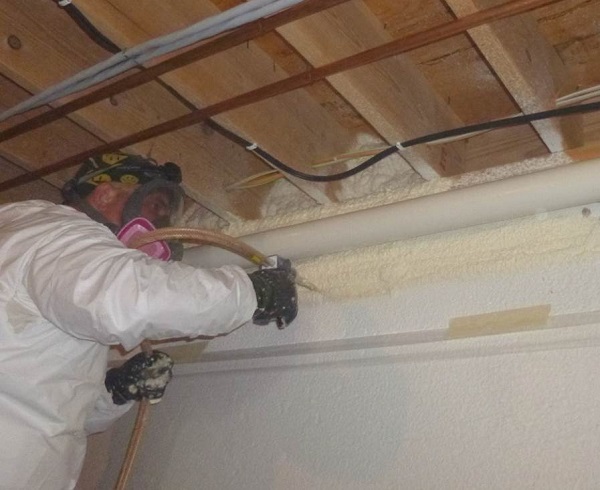Open vs. Closed Cell Spray Foam Insulation
As a homeowner, it’s important to know a thing or two about insulation and what type of insulation is right for your home. Insulation helps slow down heat movement or heat transfer in a home. In cold environments, like Michigan, it helps keep the heat inside your home by slowing how quickly your home loses heat. When it gets warmer outside, it slows the hot outside temperatures and keeps it from entering your home. Even if you know how insulation works, there are several different types of insulation.
Spray foam insulation is a great choice if you’re looking for an eco-friendlier option. Spray foam insulation provides both a thermal barrier and an air barrier, so it performs more like a winter jacket for your home. More common types of insulation like fiberglass or cellulose are only a thermal barrier, so they will function more like a wool sweater and not stop the drafts in your home.
Spray foam’s spongey, plastic material is applied by trained professionals using a commercial grade spray form rig in all the same places you would typically have insulation. However, spray foam gets those hard to reach spots and fills cracks and gaps more effectively so less air escapes. There’s two types of spray foam: open and closed cell. If you want to know more about each type of spray foam, we can give you the right information to help you make the best decision for your home’s insulation needs.
OPEN CELL SPRAY FOAM
Open cell spray foam is a lower density material that is made with polyurethane. Open cell spray foam can also contain raw materials, like soybean oil. It has a lower R-value than closed cell spray foam, which measures the amount of heat resistance. This means that open cell spray foam can be more susceptible to insulation failure when temperatures fluctuate. It can be applied in walls, ceilings and roofs.
One of the key differences is the lower density of open cell spray foam. This lower density means that the insulation has less power to trap air, sound, and isn’t waterproof. Homes in colder climates with open cell spray foam will need an additional vapor retarder for some applications to help mitigate these problems. That means open cell spray foam isn’t the best option for places that can get moist easily because it absorbs water. If it does get wet, it can cause damage to your home that can become costly. Because of these disadvantages, the initial cost of open cell spray foam is less.
CLOSED CELL SPRAY FOAM
Closed cell spray foam has a higher density than open cell with a higher heat flow resistance (R-value). It’s also made with polyurethane and can expand up to 30% of it’s original size to custom fit the areas where you need insulation. Closed cell spray foam is typically applied to attics and knee walls, crawlspaces, walls, ceilings and roofs.
Closed cell spray foam cures into a rigid substance that sticks to surfaces and prevents falling like other insulation options. This also helps add more structure and strength to walls and ceilings. One of the biggest advantages of closed cell spray foam is the higher density makes it a great vapor barrier and it’s waterproof. The waterproof feature is key for Michigan homes to reduce moisture and mold issues in attics and crawl spaces. Closed cell won’t require an extra vapor retarder or barrier. Although closed cell spray foam is more costly than open cell, the investment is worth it for long-lasting and quality insulation.
Spray foam insulation is the best option if you want an energy efficient insulation upgrade. Not only can it be used in numerous applications throughout your home, you’ll feel the difference in comfort. Ecotelligent Homes exclusively works with closed cell spray foam to give you a high-quality install. Spray foam insulation should always be installed by an experienced technician. If you’re looking to improve your home’s comfort, ask us about performing an energy audit to see where your home can benefit from energy-efficient home improvements like spray foam insulation.
